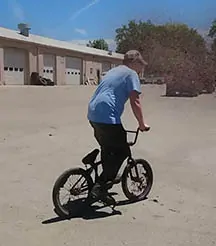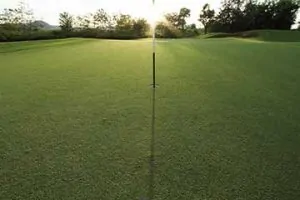

SCS Engineers’ Associate Professional, Lindsey Carlson recently coordinated a cleanup on the Beaver Dam River in Wisconsin. The cleanup is a part of the mission of Living Lands and Waters to clean the nation’s major rivers and watersheds. The Adopt A River Mile program enables people to support the mission in their own communities. SCS Engineers joined other members of the SWANA Badger Chapter, the Associated Recyclers of Wisconsin, and five members of the Beaver Dam community. SCS’s Adam Gorski and Phil Gearing are shown removing a tractor tire and other debris here.
Phil called the experience “a great time and very fulfilling.”
While getting wet and muddy, the team picked up trash and debris that filled one 5’x8’ utility trailer plus two pickup truck beds – that’s about 8 cubic yards for those not in the waste management industry 😉
The trash included a tractor tire; about seven car tires; an aluminum truck topper; an office chair; two bicycles (one still ridable); a motorcycle helmet; at least 15 feet of culvert piping; about 10 trash bags full of plastic bottles and other lightweight garbage; and quite a few other miscellaneous items.

Lindsey served as a volunteer on Living Lands and Waters’ barges during a week-long cleanup in Memphis in 2017, and “that’s how I came to know and become passionate about their cause,” she says.
Contact Living Lands and Waters to clean up your mile of river. Every mile makes a difference to help watershed conservation efforts in your community. Imagine the impact thousands of volunteers of all ages, willing to roll up their sleeves and get dirty are making. Thank you!

By using groundwater, you are able to maintain your business the way you’d like, and you shrink your water consumption footprint in the overall water resources of the state. You are conserving by using water that is available only to you — the groundwater beneath your property.
Using groundwater is a privilege that may allow you to reduce water supply costs and better meet water conservation goals while reducing strain on an already stressed resource. With privilege comes responsibility — to use the resource appropriately and carefully.
Chuck Houser works in the earth science industry. He is a registered geologist, certified engineering geologist, and certified hydrogeologist. His expertise includes environmental site assessments, groundwater monitoring, fault and landslide investigations, groundwater resource studies, geological mapping, and geotechnical investigations. Chucks scientific knowledge of geology and experience in the earth science industry for SCS Engineers enable him to prepare useful hydrogeological research, accurate environmental assessments, and environmentally appropriate remediation approaches.
This article may be of interest to managers of large tracts of land such as golf courses, parks, and recreation centers under a mandatory water conservation order and are unsure whether a facility can meet the cutback requirements and still maintain the property.